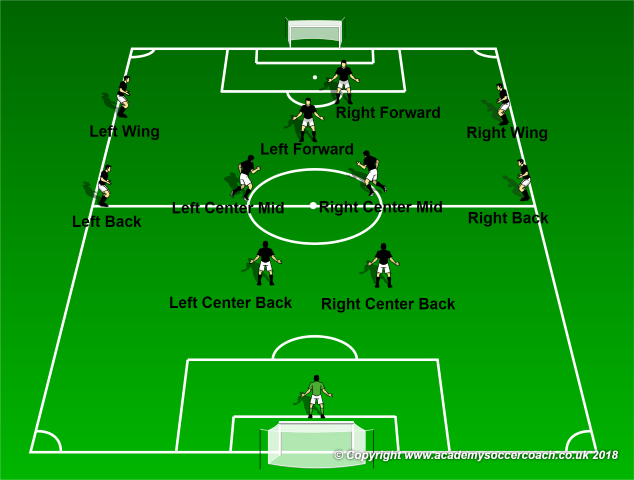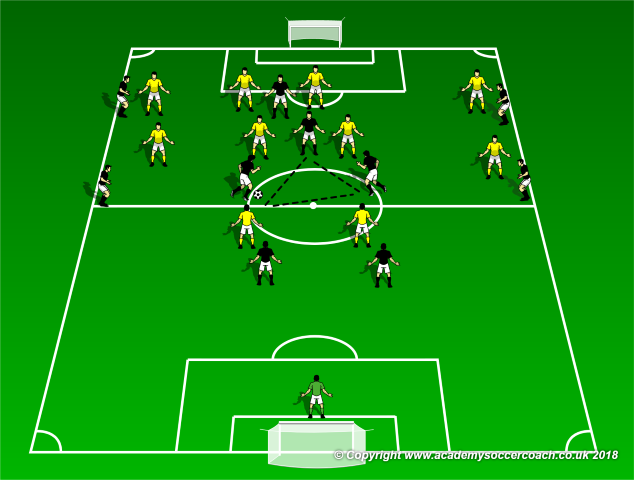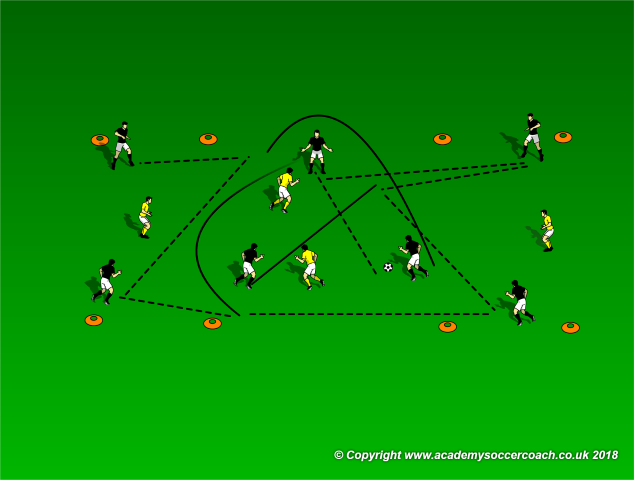By Mike Smith
I was asked this week by a fellow coach for a scouting report on a team in my district, which is currently ranked 26th in the state. He was overly concerned with formation in my opinion so what I told him to do was disrupt the triangle in the middle and force play to one side, nullifying the width. The response to me was “ is it a 4-4-2, a 4-3-3 or a 4-2-3-1?” Again, I replied, “ No matter what it is, they are going to have a triangle in the middle and get really wide.” I mention this because last year this team set the state record for goals scored in a season and is consistently one of the highest scoring teams in the state. The key to their success is keeping a triangle in the middle and getting real wide on attack. It is a great system, and the foundational triangle provides for consistency regardless of the number of defenders or forwards in support, for example:

This could easily be called a 4-4-2, a 4-3-3 or a 4-2-3-1, but regardless, the shape remains the same. In fact, a slight bit of repositioning and this could be a 5-3-2 as well. Adding defenders ( below )shows why this is such an effective system:

A good group of midfielders is going to exploit the 3 v2 in the center. Also, the right mid out on the line will not be covered as tight as I have shown above ( or the 3 v 2 will exploit the central space to goal ) and will be guarding the central space, basically giving the attacking team the wide outlet and then creating a 2 v 1 out on the line. IF you have a mobile team with good touch, good passing and good movement off the ball, this set up will guarantee possession and shooting chances. Try this drill at your next practice to see if your team could benefit from this approach:
Set Up
As shown below, set up a 30 x 30 yd square, with two 10 x 30 yd sections, one on each side. 3 attackers in the center square possess against 2 defenders who must stay in the center square. The attackers in the center must stay also, but can pass to the attackers in the wide sections for support ( wide attackers and defenders must stay in their spaces as well.) This simulates exactly the transitional shape of the central triangle supported by width. Play starts with the attacker in the center square making a pass to one of the other attackers in the central square. Once this pass is made, the attackers may pass freely between themselves in all squares. A point is scored when every attacker has touched the ball. Defending players may score points by doing the same. After 3 points are scored, players switch teams and restart.

Progression
Once all the players have grasped the concept and scoring goals becomes too easy, allow all the players to flow freely between spaces, with a focus on keeping the starting shape. An additional defender, who may roam between the spaces, may be added as well.
Coaching Points
Pass and move, communicate, good two touch passing leading to good one touch passing is the goal here. The coach should focus the players on all these points and this is actually a very good pre game warm up.
By Mike Smith
Currently the Head Coach for University Heights Academy Boys Soccer in Hopkinsville, KY , Mike is in his 14th year as a high school head coach with 23 years coaching experience overall and 34 year as a student and fan of the game. He holds a USSF D License.


